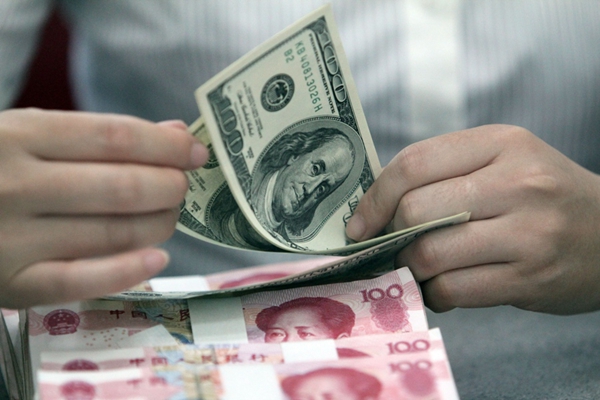China’s Foreign Exchange Reserves: An Overview
China’s foreign exchange reserves, managed by the People’s Bank of China (PBOC), play a pivotal role in the country’s economic stability and global financial landscape. These reserves consist of foreign currencies, gold, and International Monetary Fund (IMF) Special Drawing Rights (SDRs) held by the central bank to support the value of the Chinese yuan, facilitate international trade, and manage external shocks.

Image: www.mql5.com
China’s Forex Reserves: A Historical Perspective
China began accumulating foreign exchange reserves in the late 1990s to stabilize its currency during the East Asian financial crisis. Since then, the reserves have grown rapidly, reaching a peak of $4.1 trillion in 2014. However, in recent years, the reserves have gradually declined, hitting $3.2 trillion in June 2023.
Factors Influencing China’s Forex Reserves
Fluctuations in China’s foreign exchange reserves are influenced by various factors, including:
- Current account balance: A surplus in China’s current account (exports-imports) leads to an increase in reserves, while a deficit reduces reserves.
- Capital flows: Inflows of foreign direct investment and portfolio investments boost reserves, while outflows deplete them.
- Central bank intervention: The PBOC can intervene in the foreign exchange market to buy or sell foreign currencies to influence the value of the yuan and manage reserves.
Significance of China’s Forex Reserves
China’s massive forex reserves serve multiple purposes:
- Currency stability: Forex reserves act as a buffer to defend the stability of the yuan in times of financial volatility.
- External debt servicing: China uses reserves to repay foreign debt obligations.
- Global financial stability: China’s reserves contribute to global financial stability by supporting the dollar-based international monetary system and providing liquidity to financial markets.

Image: www.china.org.cn
Latest Trends in China’s Forex Reserves
China’s foreign exchange reserves have been declining in recent years due to:
- USD-RMB exchange rate depreciation: The weakness of the Chinese yuan against the US dollar has reduced the value of China’s reserves.
- Outflows due to capital controls: China’s strict capital controls have prompted some investors to move their assets overseas, reducing reserves.
- COVID-19 pandemic: The economic slowdown caused by the COVID-19 pandemic has increased China’s external deficit, leading to reserve depletion.
Expert Advice on China’s Forex Reserves
- Monitor reserve levels: Keep an eye on official data from the PBOC to track fluctuations in China’s foreign exchange reserves.
- Assess the impact of economic factors: Analyze the influence of current account, capital flows, and central bank intervention on reserve levels.
- Watch for policy changes: Follow announcements by the PBOC and Chinese policymakers terkait to foreign exchange policies and regulations.
FAQ on China’s Forex Reserves
Q: How are China’s forex reserves used?
A: China’s forex reserves are primarily used to support the value of the yuan, facilitate international trade, and manage external shocks.
Q: Why have China’s forex reserves declined in recent years?
A: The decline in reserves can be attributed to USD-RMB exchange rate depreciation, outflows due to capital controls, and the economic slowdown caused by the COVID-19 pandemic.
Q: How does China manage its forex reserves?
A: The PBOC manages China’s forex reserves and intervenes in the foreign exchange market to smooth fluctuations and maintain stability.
China Forex Reserve Investing.Com
Conclusion
China’s foreign exchange reserves represent a substantial financial asset that contributes to the stability of the Chinese economy and the global financial system. By understanding the factors influencing China’s forex reserves and monitoring recent trends and developments, investors and analysts can gain insights into China’s macroeconomic outlook and the potential impact on global markets. Is this article good for you?






